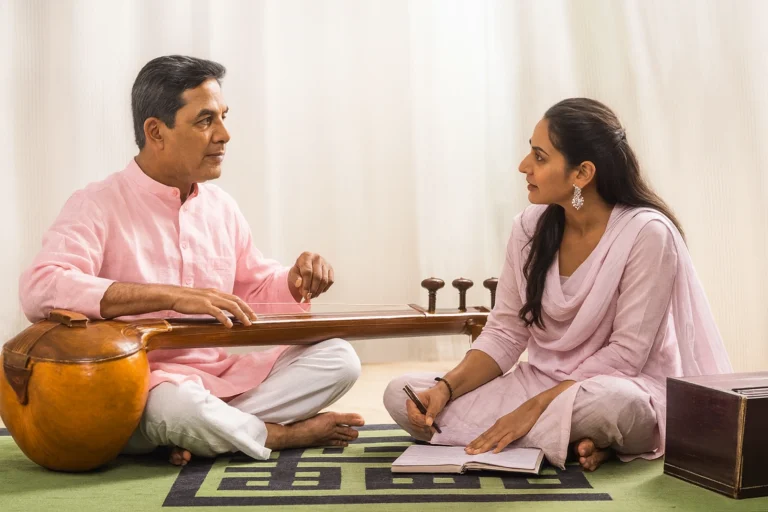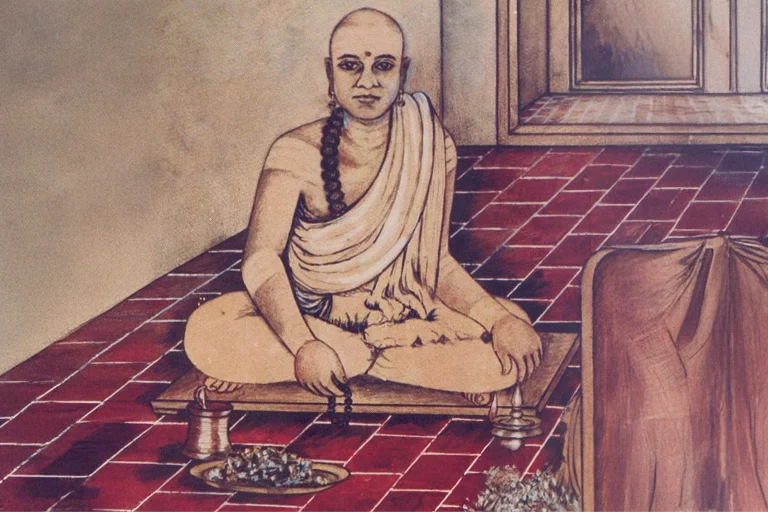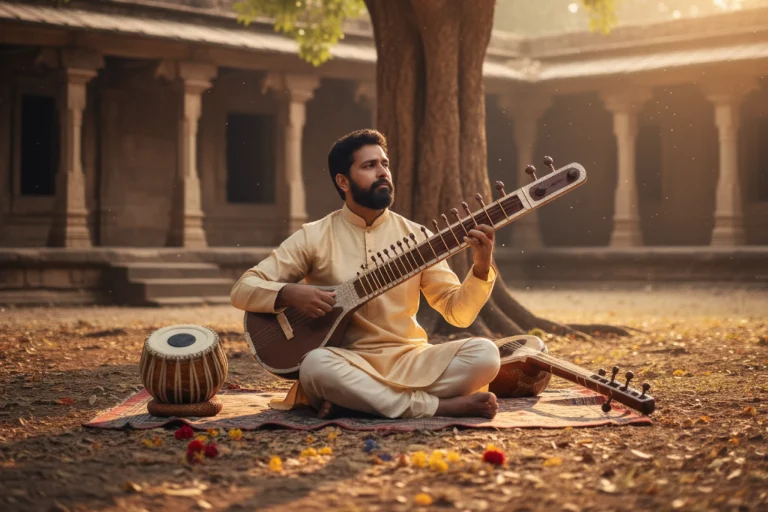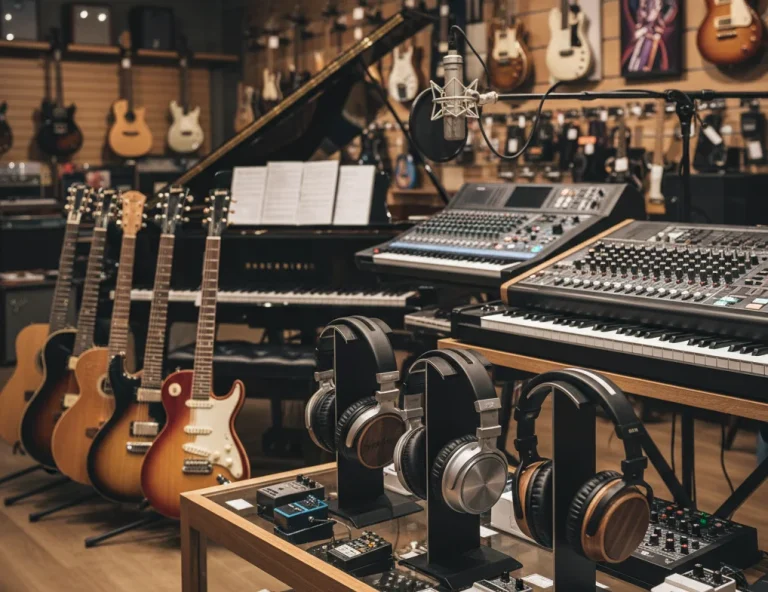All Topics
- Alchemizing Music Concepts for Students
- Artist Spotlight
- artium gift card
- Artium Maestros
- Artium News
- buying guide
- Carnatic Music
- Devotional Music
- Editorials by Ananth Vaidyanathan
- Film Music
- Guitar
- Hindustani Classical Music
- Indian Classical Music
- Indian Folk Music
- Insights
- Instruments
- Karaoke Singing
- Keyboard
- Kids Music
- maestros
- Music Education
- Music for Kids
- Music Industry
- Music Instruments
- Music Legends
- Music Theory
- Music Therapy
- Piano
- piano guide
- Tamil Film Music
- Telugu Film Music
- Time Theory
- Tools
- Uncategorized
- Vocal Singing
- Vocals
- western classical music
- western music
- Western vocal music
How to be a pro Musician via Carnatic vocal experiments
How to be a pro Musician via Carnatic vocal experiments

Table of Contents
Becoming a professional musician is a journey of constant learning, exploration, and self-discovery. While traditional training forms the foundation, the ability to experiment, innovate, and adapt is what sets a musician apart. If you are passionate about Carnatic music and want to refine your skills, the key lies in exploring different elements such as ragas, talas, improvisation, and collaboration.
For those looking to learn Carnatic music online, structured guidance from expert mentors can make this journey even more rewarding. Artium Academy provides performance-based learning that helps students go beyond theory and apply their knowledge in practical settings. Here’s how experimenting with different aspects of Carnatic music can help you become a professional musician.
But before that…
If you’re excited to begin your online Carnatic learning journey, start with a free trial lesson today!
Explore Different Ragas
Ragas form the heart of Carnatic music, each carrying unique moods, expressions, and emotions. To truly master the art of singing, one must not just practice but also experiment with various ragas.
How to Explore Ragas Effectively:
- Sing the same composition in different ragas – This enhances your understanding of how ragas influence the emotional depth of a song.
- Compare and contrast ragas – Identify similarities and differences in structure, swaras, and overall feel.
- Listen to renowned Carnatic vocalists – Observe their interpretations of ragas and learn from their unique styles.
Experimenting with ragas not only strengthens your grasp of melody but also helps in improvisation, making your music more expressive and dynamic.
Experiment with Different Talas
While melody is crucial, rhythm gives structure to music. Experimenting with different talas helps build rhythmic precision and adaptability. Talas create the framework for compositions, and exploring their variations is key to mastering Carnatic music.
Ways to Experiment with Talas:
- Practice the same Kriti with different talas – Notice how rhythmic variations alter the feel of the composition.
- Try complex tala structures – Moving beyond Adi Tala and Rupaka Tala, explore Misra Chapu or Khanda Chapu for deeper rhythmic awareness.
- Use hand gestures and rhythmic exercises – This develops internal rhythm sense, essential for both singing and accompaniment.
A strong foundation in rhythm enables musicians to perform confidently in concerts and collaborative settings.
Incorporate Improvisation
Improvisation, or Manodharma, is what makes Carnatic music unique. Mastering improvisation allows a musician to add their signature touch to performances.
How to Improve Improvisation Skills:
- Practice alapana in different ragas – Develop melodic phrases beyond the composition.
- Experiment with swarakalpana (spontaneous swara singing) – Try different note combinations and speeds.
- Challenge yourself with neraval singing – Elaborate a single lyrical line with melodic variations.
Improvisation enhances creativity, allowing musicians to express themselves uniquely within the framework of Carnatic tradition.
Collaborate with Other Musicians
Music is best learned and performed in a collaborative environment. Engaging with fellow musicians broadens perspectives and enhances performance skills.
Benefits of Musical Collaboration:
- Learn different interpretations of compositions – Gain new insights by working with vocalists, instrumentalists, and percussionists.
- Improve adaptability – Collaborating with artists of different genres sharpens musical reflexes.
- Participate in online jam sessions – Artium Academy offers opportunities to engage with fellow learners and mentors.
Collaboration not only refines musical skills but also fosters a deeper appreciation of different styles and traditions.
Experiment with Different Instruments
While vocal training is central to Carnatic music, exposure to different instruments enhances musical understanding. Learning basic techniques of veena, violin, or mridangam can deepen your grasp of melody and rhythm.
How Instrumental Knowledge Helps:
- Better understanding of swaras and gamakas – Playing an instrument allows a closer study of microtonal variations.
- Enhanced rhythm awareness – Percussion instruments train vocalists to maintain tempo and timing.
- Compositional creativity – Knowledge of multiple instruments can help in creating unique musical arrangements.
Exploring instruments makes a musician well-rounded, aiding both solo and ensemble performances.
Attend Workshops and Concerts
Live performances and workshops provide invaluable learning experiences that cannot be gained through self-study alone.
Why Workshops and Concerts Matter:
- Exposure to senior musicians – Observe performance techniques, stage presence, and audience interaction.
- Learn rare compositions – Workshops often introduce students to unique kritis and advanced techniques.
- Network with musicians – Build connections with peers and mentors for future collaborations.
Many online platforms, including Artium Academy, offer live masterclasses and workshops, ensuring students receive real-time learning opportunities.
Record and Listen to Your Performances
Self-evaluation is key to improvement. Recording practice sessions and performances allows you to analyze strengths and areas for improvement.
How to Use Recordings for Growth:
- Identify areas needing refinement – Spot inconsistencies in pitch, pronunciation, and rhythm.
- Track progress over time – Observe how vocal control and improvisation improve.
- Compare with professional recordings – Study the nuances of expert performances.
Regularly listening to one’s own singing helps in developing precision and self-awareness.
Experiment with Different Styles
While staying rooted in tradition, it is important to explore different musical styles. Integrating elements from Hindustani, Western, or folk music can enrich a Carnatic vocalist’s artistry.
How to Explore New Styles:
- Sing Carnatic compositions with Western harmonies – Understand how different musical systems interact.
- Try fusion projects – Blend classical ragas with contemporary music.
- Experiment with voice modulation – Adapt vocal techniques from other traditions to enhance expressiveness.
A versatile musician can adapt to different musical settings while retaining their classical foundation.
Conclusion
Becoming a professional musician in Carnatic music requires more than just technical proficiency. It demands continuous exploration, creativity, and a willingness to step outside comfort zones. By experimenting with ragas, talas, improvisation, instruments, collaborations, and different styles, students can develop a well-rounded and dynamic musical identity.
For those who want to refine their skills, learning music online through expert-led programs from Artium Academy provides the perfect platform. With structured lessons, interactive workshops, and performance opportunities, students can take their passion for Carnatic music to the next level.
Start your journey today and discover the joy of musical experimentation with Artium Academy!
“Do you have a question related to Carnatic music? Just ask! The Artium Academy Carnatic Music Learning Companion is here to guide you—explore ragas, master talas, and improve your Carnatic music learning journey instantly!“
FAQs on Carnatic vocal experiments
Carnatic vocal training builds strong pitch control, intricate rhythmic skills, and deep knowledge of ragas and talas, which are essential for mastering classical and contemporary music styles.
Key elements include raga exploration (melodic improvisation), gamakas (ornamentations), tala variations (rhythmic patterns), kalpana swaras (creative note patterns), and manodharma (spontaneous creativity).
Raga improvisation develops melodic depth, voice control, and emotional expression, allowing singers to perform complex phrases effortlessly and enhance their interpretative skills.
Practicing sarali varisai, janta varisai, alankaras, raga alapana, and swara exercises helps strengthen voice control, breath support, and tonal precision.
Tala is crucial, as it provides a structural foundation, timing accuracy, and rhythmic creativity, ensuring seamless coordination between melody and rhythm in performances.








